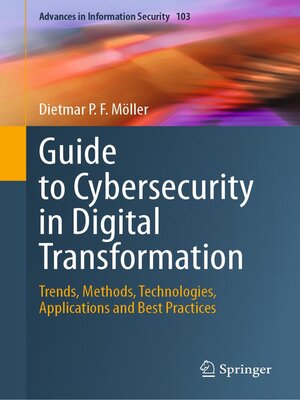Guide to Cybersecurity in Digital Transformation
ebook ∣ Trends, Methods, Technologies, Applications and Best Practices · Advances in Information Security
By Dietmar P.F. Möller

Sign up to save your library
With an OverDrive account, you can save your favorite libraries for at-a-glance information about availability. Find out more about OverDrive accounts.
Find this title in Libby, the library reading app by OverDrive.



Search for a digital library with this title
Title found at these libraries:
| Library Name | Distance |
|---|---|
| Loading... |
In today's digital transformation environments, a rigorous cybersecurity approach to effective risk management — including contingency planning, outlining immediate actions, preparing post-breach responses — is central to defending organizations' interconnected computer systems, networks, and infrastructure resources from malicious cyber-attacks.
Specifically, cybersecurity technologies, processes, and practices need to be generalized and applied to intrusion detection and prevention measures. This entails analyzing profiles of cyber-attackers and building cyber-attack models for behavior simulation that can effectively counter such attacks. This comprehensive volume aims to cover all essential aspects of cybersecurity in digital transformation and to provide a framework for considering the many objectives and requirements involved. In addition to introducing theoretical foundations, the work also offers practical techniques for defending against malicious cybercriminals.
Topics and features:
Dietmar P. F. Möller, a retired full professor, is affiliated with the Institute for Mathematics at Clausthal University of Technology, Germany. He was an author of several other Springer titles, including Guide to Automotive Connectivity and Cybersecurity.







